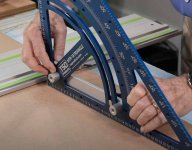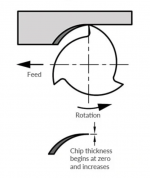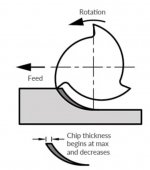smorgasbord
Member
- Joined
- Jan 7, 2022
- Messages
- 1,103
I've got a pretty well equipped shop with, among other things, a 12" blade tablesaw with a nice shop-built angle-adjustable sled, and a 12" Bosch miter saw. I've done some big projects, including entry doors, but they've all been solid wood. My current project (dragging on, and I can blame shoulder surgery now) is a Murphy bed, which uses plywood.
On big wide things like doors (and now the bed panels), I struggle to get good accurate cross-cuts. The 12" miter saw maxes out around 12", the tablesaw sled struggles with lengths over 3', and I don't have a track saw or even a good hand held circular saw. I've typically used the circular saw for a rough cut, then trim with a straight edge and router. That's slow to setup and do.
Since I'm an old foggie, I started in the days before track saws and MFTs. I'm probably never going to swap out my shop made workbench with heavy duty square dogs for an MFT like thing, but I will be tackling some other projects that need wide, accurate, and clean crosscuts, including plywood. With projects like doors, I'm also cutting 8/4 stock, but maybe I don't need that thickness for the wide crosscuts - unless I tackle a dining room table in the future. Hmm. note that I'll continue to do rips on the tablesaw.
I want something with a rail, not just to ensure an accurate 90 degree cut, but for splintering. And, I find myself doing weird angles at times, and a rail with an edge I can line up to a mark has got to be better than an edge guide with a distance at which I have to compensate and can't clamp all that well to the stock.
My first thought was the TSV60 since it has that scoring blade. I only use melamine for shop cabs, but hardwood plywood veneers are very thin these days. Any thoughts on the usefulness of the scoring blade on this saw? It's not cordless, but that's probably OK except for trips to the lumberyard where it would be nice to rip/cut plywood down to size for transport home. The does seem a bit ungainly with the extra length from the scoring setup.
I was then even thinking about the Makita XSH10Z - a 9" blade hand-held cordless circular saw that is "rail compatible." This gives me a ton of thickness capacity, can be used with or without the rail. I already have some Makita cordless tools so I don't need a charger or more batteries.
A 50" guide rail would probably do me fine, btw. My entry door was 42" wide, but I'm not planning on doing another one of those since it's holding up really well.
Part of me thinks I'm over-doing it looking at the scoring version or the Makita to get cordless (I do have one application on an outdoor bridge where cordless would be nice, but then again, plunging to a set depth is also necessary. Which means the TS60.
Thanks for any and all thoughts. Not going to get 2 saws, though.
On big wide things like doors (and now the bed panels), I struggle to get good accurate cross-cuts. The 12" miter saw maxes out around 12", the tablesaw sled struggles with lengths over 3', and I don't have a track saw or even a good hand held circular saw. I've typically used the circular saw for a rough cut, then trim with a straight edge and router. That's slow to setup and do.
Since I'm an old foggie, I started in the days before track saws and MFTs. I'm probably never going to swap out my shop made workbench with heavy duty square dogs for an MFT like thing, but I will be tackling some other projects that need wide, accurate, and clean crosscuts, including plywood. With projects like doors, I'm also cutting 8/4 stock, but maybe I don't need that thickness for the wide crosscuts - unless I tackle a dining room table in the future. Hmm. note that I'll continue to do rips on the tablesaw.
I want something with a rail, not just to ensure an accurate 90 degree cut, but for splintering. And, I find myself doing weird angles at times, and a rail with an edge I can line up to a mark has got to be better than an edge guide with a distance at which I have to compensate and can't clamp all that well to the stock.
My first thought was the TSV60 since it has that scoring blade. I only use melamine for shop cabs, but hardwood plywood veneers are very thin these days. Any thoughts on the usefulness of the scoring blade on this saw? It's not cordless, but that's probably OK except for trips to the lumberyard where it would be nice to rip/cut plywood down to size for transport home. The does seem a bit ungainly with the extra length from the scoring setup.
I was then even thinking about the Makita XSH10Z - a 9" blade hand-held cordless circular saw that is "rail compatible." This gives me a ton of thickness capacity, can be used with or without the rail. I already have some Makita cordless tools so I don't need a charger or more batteries.
A 50" guide rail would probably do me fine, btw. My entry door was 42" wide, but I'm not planning on doing another one of those since it's holding up really well.
Part of me thinks I'm over-doing it looking at the scoring version or the Makita to get cordless (I do have one application on an outdoor bridge where cordless would be nice, but then again, plunging to a set depth is also necessary. Which means the TS60.
Thanks for any and all thoughts. Not going to get 2 saws, though.



